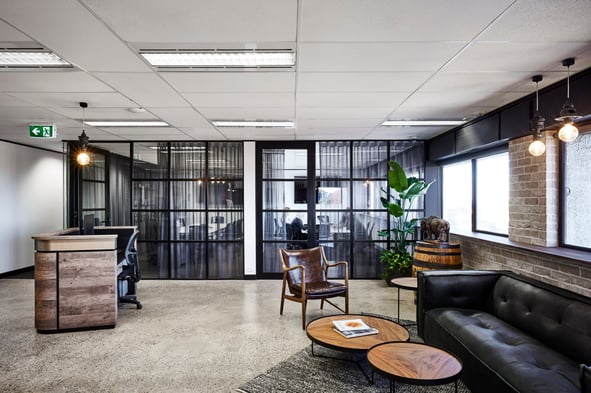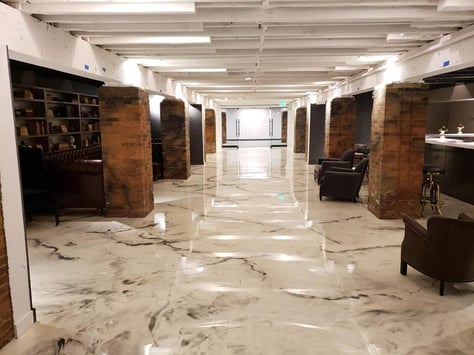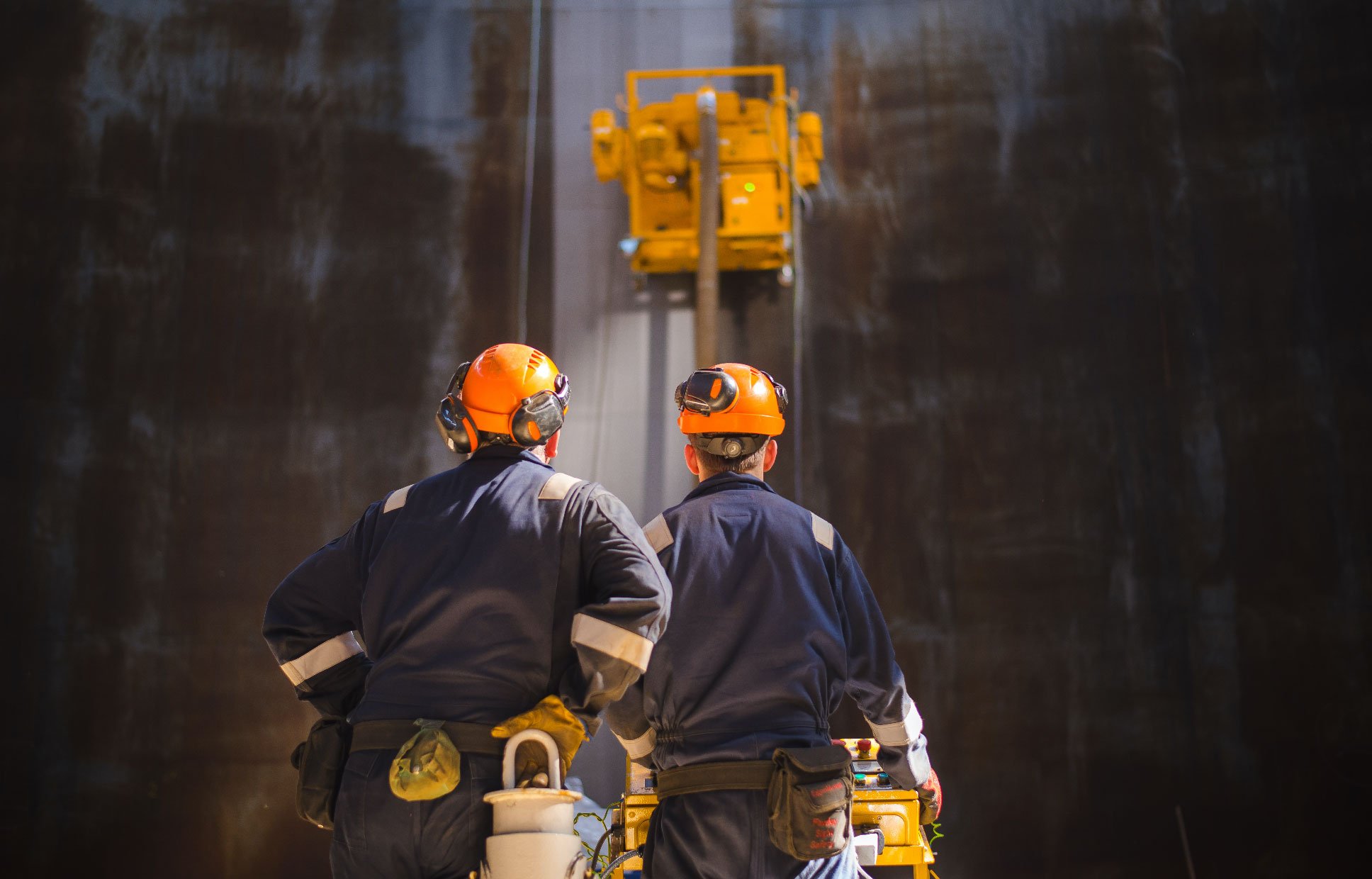
Finished concrete surfaces have gained great popularity in recent years, and when it comes to enhancing the appearance and durability of your concrete floors, two popular options stand out that give, in many cases, similar aesthetic results but are very different:
- concrete polishing…
- grinding & sealing…
Both methods are great options as they offer unique benefits and can transform dull and worn-out concrete surfaces into stunning, beautiful, long-lasting floors. In this article, we will explore the differences between the two methods to finishing a concrete surface, helping you make an informed decision about which approach is best suited for your specific needs.
Concrete Polishing:
Concrete polishing is a process that involves mechanically grinding, honing, and then polishing the surface of a concrete floor using diamond abrasives. It is a multi-step procedure that gradually refines the concrete, resulting in a glossy, smooth, and highly reflective finish.
Here are some key benefits of concrete polishing:
- Enhanced aesthetics: Polished concrete floors have a sleek and sophisticated appearance that can significantly elevate the overall look and feel of any space.
- The high-gloss finish reflects light, creating a bright and inviting atmosphere.
- Increased durability: Through the polishing process, concrete floors become denser and more resistant to wear and tear. They can withstand heavy foot traffic, impacts, and stains, making them ideal for commercial and industrial settings.
- Low maintenance: Polished concrete floors are relatively easy to maintain.
- They are resistant to allergens and mold, making them a hygienic choice for areas like hospitals and schools. Regular cleaning with mild detergent and occasional buffing will keep the floor looking its best.
- The concrete is rendered “Dustless” it will no longer release dust into the environment as untreated slabs do.
The downside to a mechanically polished floor…
- Polishing concrete is a slow process comprising an average of 6-7 passes, in some cases as many as 10 passes are necessary.
- Expensive, a truly polished floor costs more because of the high amount of time, equipment, and diamond tooling needed to complete the process. (In the long run though, say 20 years, polished concrete is a very cost effective choice because with minimal maintenance, unlike other finishes, it never needs replacing!)
CLICK HERE FOR INFORMATION ON THE BARTELL GLOBAL DIAMOND POLISHING SYSTEM
Grinding and Sealing:
Grinding and sealing is a method that involves grinding the concrete surface to remove imperfections and then applying a protective topical sealer like an Acrylic, Polyurethane, or Epoxy product. This approach is often chosen for older concrete floors or those with visible damage. Also, for its cost-effectiveness and the relatively quick turnaround time.
Here are some advantages of grinding and sealing:
- Surface restoration: Grinding the concrete surface helps eliminate blemishes, stains, and unevenness caused by years of use. It creates a smooth and even surface, providing a fresh canvas for the subsequent sealing process.
- Versatile finishes: With grinding and sealing, you have the flexibility to choose from various sealers, such as acrylic, epoxy, or polyurethane. Each sealer offers different benefits, including enhanced resistance to chemicals, water, and UV rays. This method allows you to customize the appearance and performance of your floors to suit your specific requirements.
- Cost-effective solution: If you have a tight budget or limited time, grinding and sealing can be a more cost-effective option compared to concrete polishing. The process is typically faster and requires fewer steps, resulting in a more affordable overall project.
- Wider color options, you can either seal the concrete with a "Clear Coat" allowing you to see the concrete surface or apply a wide variety of coating color options like the one below.

The downside to a Grind and Seal finish…
- With this process, you typically do not densify the floor, so it does not harden and become integrally “Dust Free”.
- Sealers can be damaged and wear off. Topical finishes sit on the surface and are subject to damage like scratches, chipping, typical wear and the need to recoat.
- Topical sealers are susceptible to damage and failure due to water migrating through the slab.
Choosing the Right Approach:
Selecting between concrete polishing and grinding and sealing depends on several factors:
- Condition of the concrete: If your concrete floor is in relatively good condition with minor imperfections, polishing might be the ideal choice. However, for older floors with significant damage, grinding and sealing may be more suitable to achieve a fresh and revitalized surface.
- Desired aesthetics: Consider the look you want to achieve. Polished concrete provides a high-gloss finish that reflects light and can be colored or dyed a varity of colors, while grinding and sealing offers a much higher versatility in terms of appearance, allowing you to choose a sealer that matches your aesthetic preferences.
- Budget and timeline: Concrete polishing generally requires more time and effort, as it involves multiple grinding and polishing steps. If you have budget constraints or need a quicker turnaround, grinding and sealing may be a more practical solution.
Conclusion:
Both concrete polishing and grinding and sealing are effective methods for transforming worn-out concrete floors into stunning and durable surfaces. Concrete polishing offers a sleek and glossy finish, ideal for enhancing aesthetics and durability. On the other hand, grinding and sealing restore older floors and provide versatility in terms of appearance and cost-effectiveness.
Ultimately, the choice is yours...


 By
By